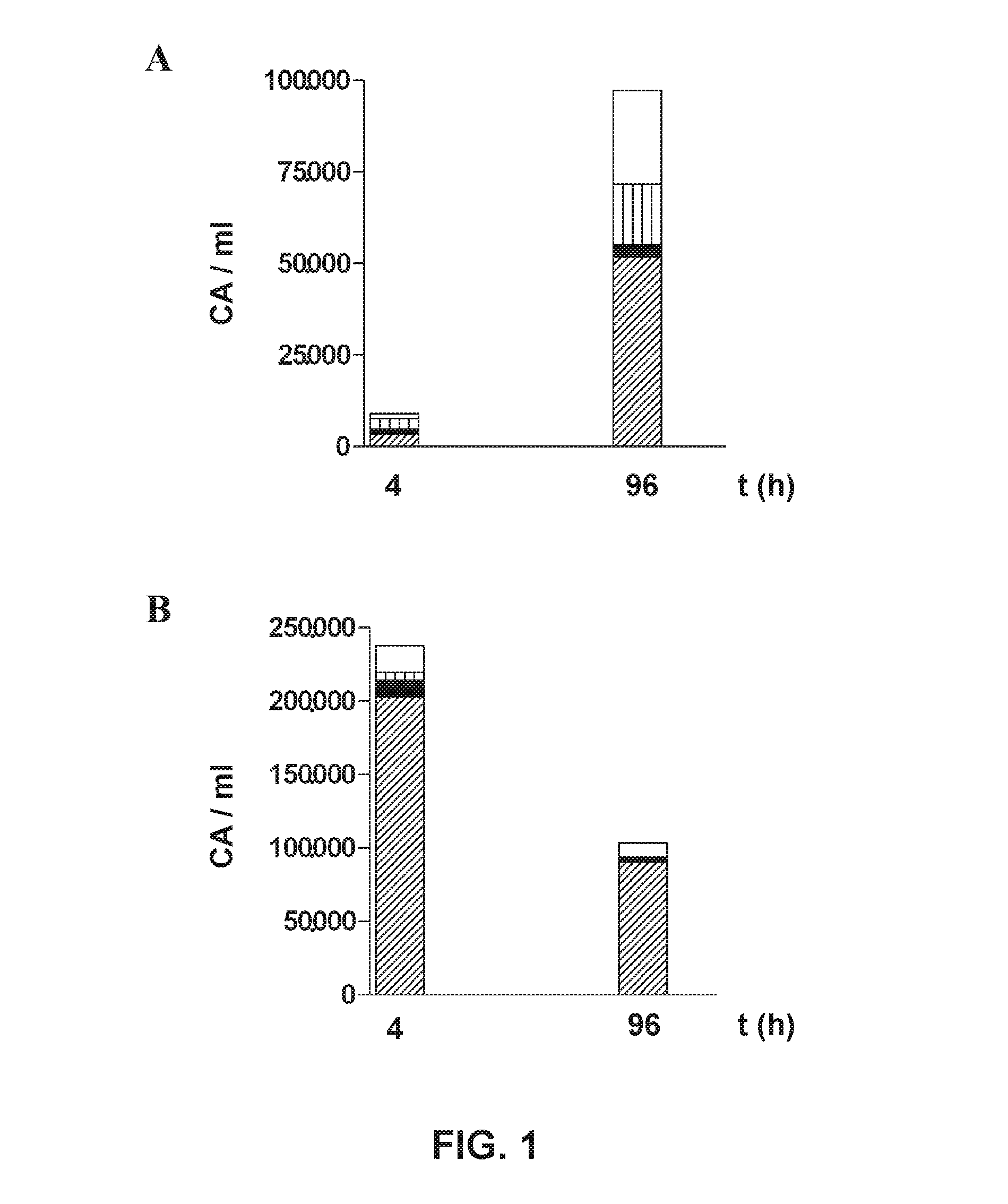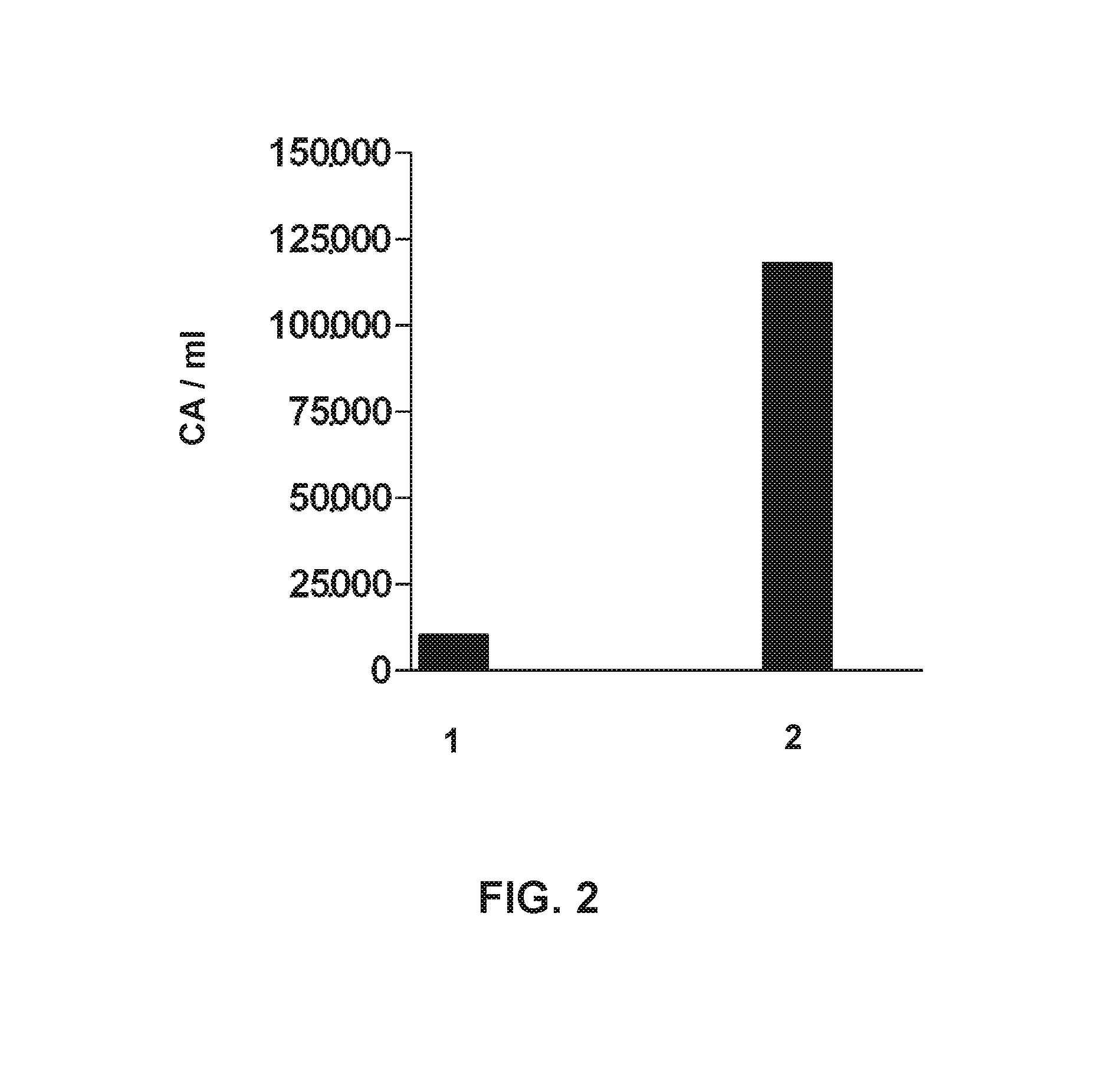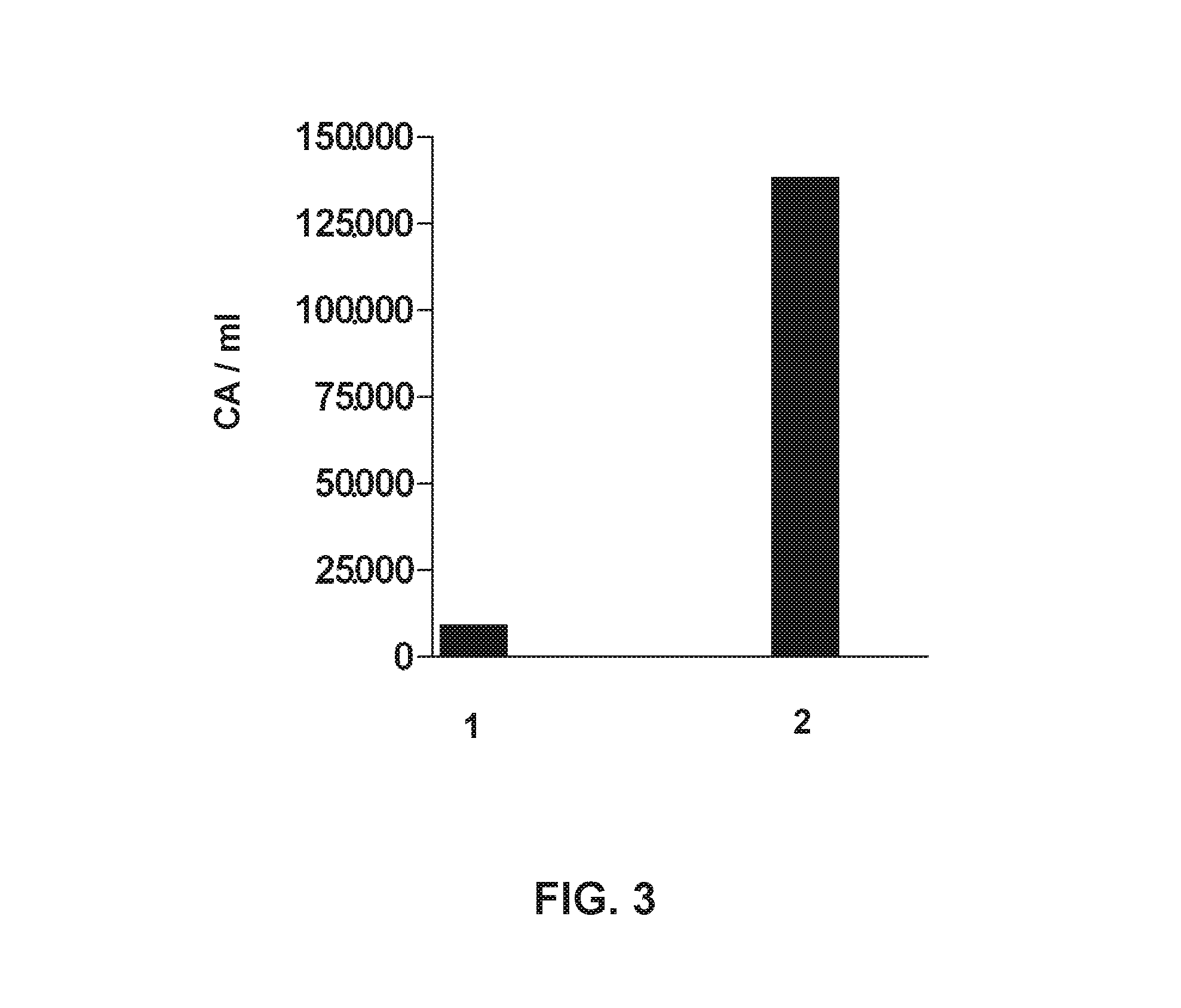Method for isolating apoptotic bodies
a technology for apoptosis and apoptosis cells, applied in the field of apoptosis, can solve the problems of sedimentation of all cellular blood components, inability to isolate up to 90% of all apoptotic bodies present in body fluids, and inability to maintain integrity
- Summary
- Abstract
- Description
- Claims
- Application Information
AI Technical Summary
Benefits of technology
Problems solved by technology
Method used
Image
Examples
example 1
Isolation of Apoptotic Bodies. Purity
[0099]The trial includes 6 patients, two diagnosed with ischemic stroke (Patient 1: 85-year-old woman, Patient 2: 59-year-old man), two diagnosed with multiple sclerosis (Patient 3: 51-year-old woman, Patient 4: 32-year-old man), and two of Parkinson's disease (Patient 5: 61-year-old man, Patient 6: 68-year-old woman).
[0100]Blood (20 ml) from each patient was collected in the neurology service and deposited in tubes with sodium citrate. After less than 2 hours from extraction, the isolation of the apoptotic bodies was performed by means of serial centrifugations by the method of the first aspect of the invention, as indicated below:
[0101]Blood samples were subjected to centrifugation: 250 g for 10 min at 18° C. The plasma phase of the sample from patient 1 was diluted in a 1×TBS buffer in a ratio of 1:3 (step a1) and centrifuged at 850 g for 20 min at 18° C. (step b). The supernatant from the previous centrifugation was transferred to a clean pol...
example 2
Isolation of Apoptotic Bodies. Performance
[0104]The trial includes 2 patients, two diagnosed with ischemic stroke (patient 1: 76-year-old man, Patient 2: 58-year-old man).
[0105]Blood (20 ml) from each patient was collected in the neurology service and deposited in tubes with sodium citrate. Within less than 2 hours after extraction, the isolation of apoptotic bodies was performed as follows:
[0106]Blood samples were subjected to centrifugation: 160 g for 20 min at 18° C. The plasma phase (containing the apoptotic bodies) of sample from patient 2 was transferred to a sterile polypropylene tube (step a) and centrifuged at 700 g for 30 min at 18° C. (step b). The plasma phase of the sample from patient 1 was diluted in a 1×TBS buffer in a ratio of 1:3 (step a1) and centrifuged at 700 g for 30 min at 18° C. (step b). The supernatant from the previous centrifugation was transferred to a clean polycarbonate tube and centrifuged at 14,000 g for 30 min at 9° C. (step c). The supernatant from...
example 3
[0110]The trial includes two patients, a 78-year-old woman and a 70 year-old woman, who were attended by the Neurology service on suspicion of ischemic stroke. A simple CAT scan was performed under perfusion protocol, which showed ischemic injury in the area of the right middle cerebral artery in patient 1, and in the area of the left middle cerebral artery in patient 2. Below, are the reported clinical data for each patient;
[0111]aetiology as per TOAST classification:[0112]Patient 1: Cerebral infarction of undetermined origin.[0113]Patient 2: Cerebral infarction of cardioembolic origin.
[0114]radiological assessment: (i) initial (determination of the volume of initial infarction obtained from the CAT—perfusion test) and (ii) final, at 96 h from the onset of symptoms (a simple CAT scan was performed to determine final infarction volume).
[0115]Patient 1: initial infarction volume: 22,310 mm3, infarction volume at 96 h: 57,127 mm3. Ischemic lesion increased 2.5 folds dur...
PUM
| Property | Measurement | Unit |
|---|---|---|
| temperature | aaaaa | aaaaa |
| temperature | aaaaa | aaaaa |
| temperature | aaaaa | aaaaa |
Abstract
Description
Claims
Application Information
 Login to View More
Login to View More - R&D
- Intellectual Property
- Life Sciences
- Materials
- Tech Scout
- Unparalleled Data Quality
- Higher Quality Content
- 60% Fewer Hallucinations
Browse by: Latest US Patents, China's latest patents, Technical Efficacy Thesaurus, Application Domain, Technology Topic, Popular Technical Reports.
© 2025 PatSnap. All rights reserved.Legal|Privacy policy|Modern Slavery Act Transparency Statement|Sitemap|About US| Contact US: help@patsnap.com



